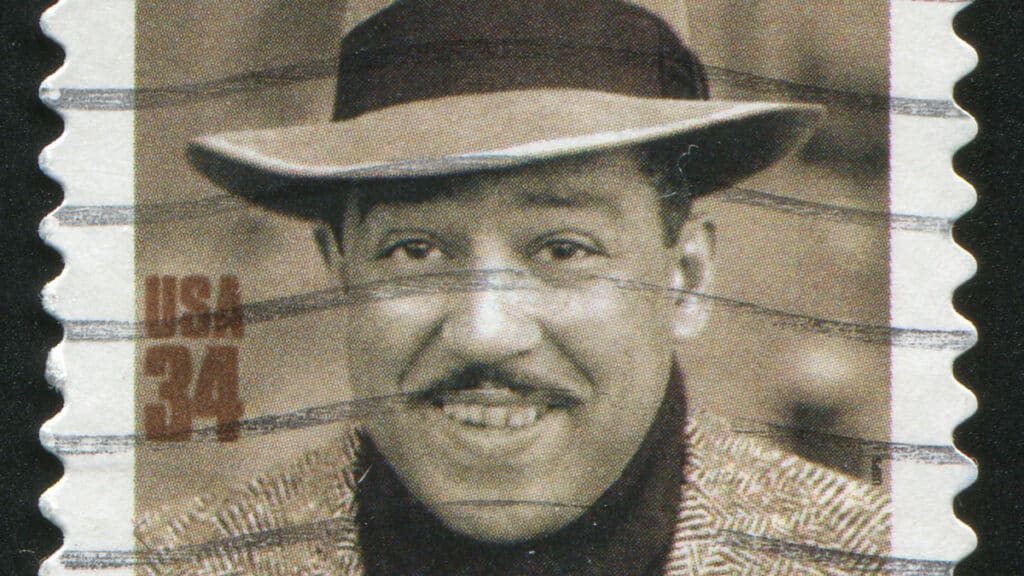Langston Hughes was a writer about the Black experience and an important Harlem Renaissance figure. He was a journalist who also wrote poetry, plays and novels.
Hughes was born in Joplin, Missouri on February 1, 1902. Recent scholarship suggests it might have been 1901. He was raised mostly in Lawrence, Kansas and used books as a refuge from the boredom of growing up in the countryside.
The Negro Speaks of Rivers
Human genius usually shows itself early in life. Hughes wrote his most famous poem, “The Negro Speaks of Rivers” (link to Poetry Foundation) his first summer out of high school. It drew immediate attention after being published in the NAACP magazine “The Crisis” in 1921.
It’s a short beautiful poem that speaks to rivers representing civilization, Africa and America. He speaks of the Euphrates where civilization began with farming. He speaks of the Congo, Africa’s second longest river, the big river on the Atlantic. He speaks of the Nile, Africa’s longest river and the source of Nubian and Egyptian civilization, the world’s second great civilization. And the poet speaks of the Mississippi, North America’s great river.
The cadence of Langston’s voice sounds like Old Man River. If you ever spent any time on the banks of the Mississippi, or one of these other great rivers, you know what we’re talking about.
When he wrote this poem, Hughes had never been to Africa or Asia, but he was a dreamer. Even as a young man, he traveled the world in books. You can follow him at the library.
Harlem Renaissance Man

Hughes went to Columbia University in 1921 and ’22. The college looks out over Harlem from Manhattan Heights. From there he got to know Harlem.
It was the time of the Harlem Renaissance (1918 – mid 1930s), a flowering of African American art and literature. It was the Jazz Age, the Roaring Twenties, and Hughes was one of its leaders. His poetry was jazz poetry. Don’t you wish you could spend a night in Harlem in that time? Harlem is still an amazing place, but it must have been beautiful.
Hughes was a wanderer who traveled the world. He even worked as a correspondent in 1937 during the Spanish Civil War. Traveling gives you a perspective that you can’t get at home. You start to recognize the universality of the human condition in all its best and worst expressions. At some level, you have to leave your country in order to fully understand it.
Langston Hughes Translated Spanish Writers
Langston was influenced by Spanish because he translated the works of beloved Spanish poet Federico García Lorca and Chilean poet Gabriela Mistral, the first Latin American author to receive the Nobel Prize in Literature.
The Spanish speaking seems odd, but Hughes spent a little time as a teenager with his father in Mexico.
Schomburg Center for Research in Black Culture
Hughes died in New York City in 1967. His ashes are interred under the foyer of Schomburg Center, the New York Public Library’s Black culture research library founded around the collection of another Harlem Renaissance figure, Puerto Rican intellectual Arturo Alfonso Schomburg.
The poet’s ashes are buried under a lovely floor medallion that shows a human being formed by rivers with hints of both African traditions and the modern age. If you didn’t know, “The Negro Speaks of Rivers,” you wouldn’t understand the medallion. In a modern way, it channels a West African tradition of drawing sacred figures on the ground as part of ancestral veneration traditions. This is still done in the Caribbean. It’s done in South Asia too.
Literature triggered something in the young Langston Hughes. It stirred his genius. After all, the sound of a page turning is not so different from the sound of waves lapping on the river’s shore.
These are Hughes’ words, but as every reader knows:
“My soul has grown deep like the rivers.”
Langston Hughes, “The Negro Speaks of Rivers,” 1921
